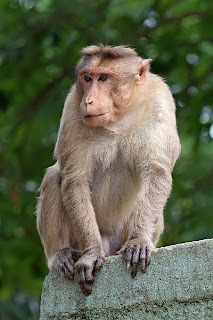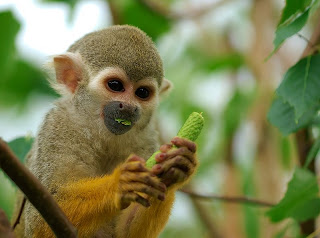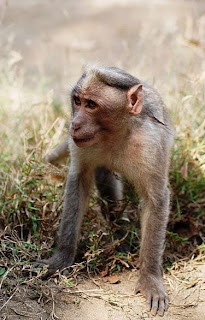 |
| monkey pictures |
A monkey is a primate, either an Old World monkey or a New World monkey. There are about 260 known living species of monkey. Many are arboreal, although there are species that live primarily on the ground, such as baboons. Monkeys are generally considered to be intelligent. Unlike apes, monkeys usually have tails. Tailless monkeys may be called "apes", incorrectly according to modern usage; thus the tailless Barbary macaque is called the "Barbary ape".
 |
| monkey pictures |
The New World monkeys are classified within the parvorder Platyrrhini, whereas the Old World monkeys (superfamily Cercopithecoidea) form part of the parvorder Catarrhini, which also includes the hominoids (apes and humans). Thus, scientifically speaking, monkeys are a paraphyletic group, meaning that although they are believed to have evolved from a single ancestral species, the group does not contain all the descendants of that ancestor. Old World monkeys are actually more closely related to hominoids than they are to New World monkeys.
 |
| monkey pictures |
Monkeys range in size from the Pygmy Marmoset, at 140 to 160 millimetres (5–6 in) long (plus tail) and 120 to 140 grams (4–5 oz) in weight, to the male Mandrill, almost 1 metre (3.3 ft) long and weighing 35 kilograms (77 lb). Some are arboreal (living in trees) while others live on the savanna; diets differ among the various species but may contain any of the following: fruit, leaves, seeds, nuts, flowers, eggs and small animals (including insects and spiders).
Some characteristics are shared among the groups; most New World monkeys have prehensile tails while Old World monkeys have non-prehensile tails or no visible tail at all. Some have trichromatic color vision like that of humans, others are dichromats or monochromats. Although both the New and Old World monkeys, like the apes, have forward-facing eyes, the faces of Old World and New World monkeys look very different, though again, each group shares some features such as the types of noses, cheeks and rumps. (source)
sponsored links